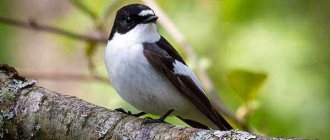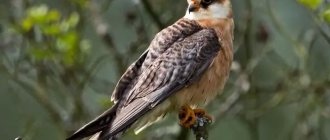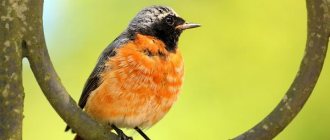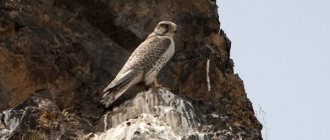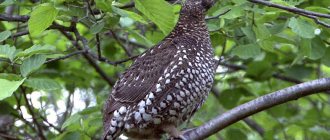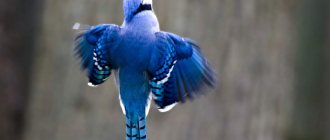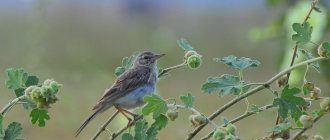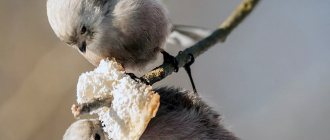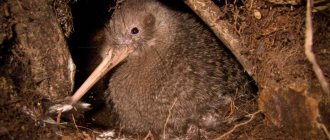Having been near bodies of water (rivers or lakes), everyone has probably seen long-winged birds that are medium-sized and inconspicuous at first glance. People usually call them seagulls for their distant resemblance. In reality, this is a common tern (order Charadriiformes). They can be noticed by their characteristic flight and sharp, slightly squeaky voice in case of alarm. This is a fairly common species of birds, often forming large colonies. Being a numerous species, nevertheless, they are defenseless against predators, and, in fact, humans.
River tern: description
The species is very common and is found everywhere south of the tundra zone. It is a graceful bird about the size of a dove. The body length is from 30 to 35 cm, but with a large wingspan - 70-80 cm. Weight varies from approximately 100 to 180 g. The plumage is characteristically inconspicuous, light gray or white. On the head there is a “cap” of glossy black color. Only the red beak (with a black tip) and legs add brightness. The common tern's voice can be very varied, but the predominant voice is sharp with a characteristic crackling, creaky sound, it sounds approximately like “kierr”, sometimes a quieter and calmer “ki-ki-ki”.
The appearance really strongly resembles a small gull. However, the tern has narrower and longer wings. The second difference is the tail; it has a deep neckline, like a swallow. And third - a black “cap” on the head.
Adult individuals undergo molting twice a year - prenuptial complete and partial. As a rule, it takes place during the winter.
Plumage
During the mating season, female and male individuals have a black coloration on the forehead, crown and back of the head. The chin, throat, lower feathers of the wings and tail are painted white. The chest and abdomen are gray, sometimes with a pink tint.
The winter outfit is characterized by a lighter, gray color of the back, the underparts are white, and the crown is black and gray.
The downy outfit is light, there are spots on the head. The throat and cheeks are dark brown. The belly and chest are painted white.
The nesting outfit is quite varied. The forehead is white-ochre in color. The back of the head is black, with streaks. The feathers on the back are light gray. The throat and belly are white-ochre.
Habitats and distribution
The nesting area is quite wide. It extends throughout the Palearctic, except for the regions of the Far North, where this species is replaced by the Arctic tern. It is also found on the North American continent. The common tern nests almost throughout Europe, both in inland waters and on sea coasts. In the south, the habitat in the form of separate settlements reaches Senegal, Mauritania, Tunisia, and Israel. Irregular nesting is observed in Libya, Morocco, Syria and Cyprus. And isolated areas of the range are located in Turkey, Afghanistan, Iran, Iraq and Pakistan. This is a migratory bird, and in winter it migrates to warm regions: New Guinea, Africa, the Philippines, and the west of the South American continent.
There have been cases of common tern settling in the tundra, however, unlike its polar relative, it chooses river valleys there. She avoids the typical tundra landscape.
It lives mainly on pebble and sandy spits, along the shores of lakes (in lowlands), on flat sea coasts, and in the valleys of large rivers. Moreover, for nesting it chooses not only flat areas, but also mountainous areas at an altitude of up to 4800 m (in Tibet, Pamir). In general, according to the observations of ornithologists, the tern still gives preference to standing reservoirs and calm rivers with a slow flow.
Where does he live?
The common tern lives in the Palearctic, lives in North America, Europe, Russia, Africa, Turkey, Pakistan.
In Russia, these birds settle in Karelia, Yakutia, Kamchatka, Western Siberia, Crimea, and Transcaucasia. The southern boundaries of its habitat lie in the area of the Yellow and Yangtze rivers, as well as in Tibet. There is a noticeable tendency for habitats to change towards the north.
Birds settle in river valleys and deltas, along lakes and ponds, coasts and sea bays. Sometimes they are found in forest-tundra zones.
Common tern: food
First of all, he is a good hunter. The diet consists mainly of small fish and shellfish; it easily rushes into the water after them, plunging down to its very wings. Favorite habitats are sand spits and shallows along the banks of reservoirs, especially large rivers. In shallow water it is much easier for her to reach prey, mainly fry. She looks out for her prey, hovering in one place in the air. In addition, dragonflies, flies, various beetles, locusts, etc. are eaten.
The feeding area is large reaches and shallow waters, and these birds can catch insects in flight, similar to swallows. During the nesting period, they can fly for food over distances generally not exceeding 10 km, in rare cases 20-26 km.
By forming large flocks and colonies, common terns can cause damage to fisheries. However, this is rare and, as a rule, they hunt individually for species that have no commercial significance.
Interesting facts about the bird
- Arctic terns are the only bird species that seasonally migrate from the Arctic to the Antarctic, with each bird covering a distance of up to 70 thousand kilometers per year. This flight in one direction lasts about a month. Scientists attached miniature geolocators to the legs of Arctic terns and traced their annual migration routes. It turned out that terns are champions in terms of migration distance. In 30 years of life, a bird covers a distance equal to three flights to the Moon and back.
- There are approximately 1 million Arctic terns in the world today, and population numbers remain stable. At the same time, birds are dispersed over a large area that covers the entire globe. Their colonies are small and usually located at a great distance from each other.
- In past centuries, the feathers of Arctic terns were used to decorate ladies' hats, and the birds were caught for this purpose. Nowadays this fishery is not in demand.
Nesting
The ability to reproduce occurs at 3-4 years of age. Birds are monogamous and in almost 80% of cases they remain paired for at least two seasons. Male terns are characterized by special mating behavior. It is expressed in an aggressive display, adopting a bent posture, lowering the beak to an almost completely vertical position, and holding the tail up.
The common tern builds its nests on shallows (sandy or pebble), usually as part of a large colony, and sometimes even together with other birds. This is explained primarily by the need for collective protection from predators. Alone, a bird is unable to protect its nest and chicks. And in cooperation they attack the “robber”, beat him with their beak and deafen him with their screams.
Common terns choose places with little vegetation. The tern builds its nest directly on the ground. It looks like a small hole made in the ground. If there is any bedding in it, it is very scanty, made up of dry grass and feathers. The nest measures 8-10 cm in diameter.
Reproduction
In order to win the attention of a female during the mating season, the male of this bird species initially seeks to conquer her by performing extreme turns in the air. And at the end of such performances, he brings the female a fish as a gift, having completely achieved her favor.
The emerging pair of future parents are not particularly concerned about the quality of the place where the eggs will be hatched. If given the opportunity, they will gladly use a nest built by some other sea bird. Those who did not manage to occupy other people’s nests from last year are looking for a depression in the guano layer or abandoned animal holes. Also suitable for the Inca tern is a modest cave located on the rocky shore of the Pacific Ocean, a crevice between large boulders, or an elementary niche formed under a stone. In subsequent years, the birds try to return to the place they have found and are already familiar with.
Inca tern chicks
A female Inca tern can lay 1 to 3 eggs, but most often it is 2 eggs. Both parents incubate them for 3.5 - 4 weeks. The emerging babies are framed with delicate fluff. Almost immediately after hatching, the chicks are quite energetic and quickly increase in size, gaining weight. The chicks' diet consists of half-digested fish, passed on to them by their parents. Seven days after hatching, the chicks, under the supervision of their parents, begin to conquer the waters. Within another one and a half, two months, the young animals gain skills, experience and strength so as not to depend on their parents for anything. After this period, young terns fly away from the nest and, as the air temperature drops, together with other relatives, they fly to warmer climes for the winter.
Sexual maturity in the Inca tern occurs the following year in the spring.
An Inca tern feasts on its favorite food
Hatching chicks
Reproduction times vary quite a lot depending on some factors, including habitat. Birds arrive from the southern regions closer to mid-May; the first clutches can be found already in the first half of June.
The common tern usually has three eggs in its clutch, much less often four; they have a green-ocher or olive tint with speckles of brown or almost black color. The eggs are small in size, ranging from 3.8-5 cm in length and 2.9-3.2 cm in width.
The incubation process of the common tern (photo can be seen above) begins from the moment the first egg is laid, and this period lasts on average about 20-22 days. It is carried out alternately. The female sits at night, but the male most often replaces her only during the day. The chicks begin to hatch in early July, and by August they are able to fly (about 25 days after hatching).
Natural enemies
Wild and domestic cats often try to sneak into tern nesting sites to feast on eggs or babies . This is where the courage and ability to stand up for themselves is needed by the birds, who all rush together at the enemy. But other animals also hunt for eggs; they are considered a delicacy by people who go out to collect their “prey”, carrying the eggs away in baskets.
Some islands have already banned such poaching, saving terns, whose numbers have noticeably decreased. Adult terns become prey to predators both in the sky and on the ground.
Return to content
Subspecies of Common Tern
In total, it is customary to distinguish four subspecies; the differences often relate to the color of the plumage, beak, legs, body size and wings. Let us give their Latin names and a short description.
- Sterna hirundo hirundo. These are the lightest birds; they do not have a brown tint in their plumage. The black-tipped beak is red, as are the legs. Conventionally, they are called the nominal race.
- Sterna hirundo minussensis. Individuals are darker in color, the black area on the beak is more pronounced. The color of the legs varies from bright red to brown.
- Sterna hirundo longipennis. Even more common tern (see photo in the article). It has a wide black stripe on its beak. In some individuals, especially in populations in the East, it is completely dark. The color of the birds' legs also noticeably changes to brown or black.
- Sterna hirundo tibetana. These are the darkest in body color; they have a brown coating on top. But the legs and beak are red.
Family Terns / Sternidae
Terns are close relatives of gulls and are sometimes considered equal subfamilies. For the most part, these are smaller birds than seagulls, although some reach the size of quite large seagulls. Terns have an elongated, thin body, long, sharp wings, and a usually forked, deeply cut tail. The paws are small. The beak is long and sharp. The coloring is most often light; many species have a black cap on their heads. Terns spend most of their lives in the air. Although they have webbed feet, most terns are mediocre swimmers. To rest, they usually sit on the shore or on objects floating in the water. The flight is maneuverable, easy, fast with rare strong flapping of the wings. Soaring flight is almost never used. They can hover in one place, fluttering their wings. A typical hunting technique is diving from a low height into the water. The terns dive into the very surface layer of water. Having grabbed the prey, they immediately fly further, swallowing it on the fly. They feed mainly on small fish and crustaceans; during the nesting period, some species also feed on insects, which they catch on the fly. They nest in colonies, often very large and dense. Each pair, however, has its own tiny nesting territory, which it jealously guards from neighboring pairs. Very noisy and loud birds, they actively drive away any intruder from their nests, be it an arctic fox or a human. Swooping from above, they can even peck the intruder. Therefore, many other aquatic birds settle under the protection of terns. Many terns, one might say, do not build nests, although they nest not only on the ground, but also on bushes and trees. Marsh terns build nests from plants on the water. Different species lay 1, 2 or 3 eggs. The male and female incubate. After a day or two, the chicks are able to run. They usually have a camouflage color. The mortality rate of chicks in some species is very high, more often in those that lay 3 eggs. For others, it is negligible, since the offspring from the only eggs of each pair are able to maintain population stability. In addition, as banding shows, terns can live quite a long time - 23-27 years. Terns are distributed very widely throughout the world, from the high latitudes of the Arctic to Antarctica. Some species live exclusively in tropical latitudes. Among all birds, terns are the champions in terms of the length of their migrations. The Arctic Tern flies to the southern hemisphere for the winter each year and returns home to the Arctic. In the world fauna, terns are almost as numerous as gulls—43 species, but only 10 species nest in Russia.
Tern / Sterna hirundo
| The tern is a medium-sized tern, weighing 100-175 g. It is easily distinguished from other terns by the general appearance and color of the plumage. Her wings are very long and narrow, her tail is deeply cut. In her wedding attire she is light gray on top, white below, and has a black cap on her head. The beak is red with a black tip. This tern flies easily and tirelessly, often stops and, often fluttering its wings, seems to hang in the air, looking out for prey. It takes the latter from the water, where it rushes with folded wings from the air. At the same time, she plunges into the water, sometimes remaining under it for up to one second. | Tern |
It walks little and reluctantly on the ground, and sometimes swims in hot weather. The common tern is widespread in Europe, with the exception of the Far North, in a large part of Siberia, in Asia Minor, Western Asia, Central Asia, partly in Central Asia and Mongolia, as well as in North Africa and the eastern parts of North America. This is a migratory bird. Winters in Africa, Hindustan and South America. It settles along rivers, lakes and sea coasts, preferring sandy, pebble and salt marsh shores with sparse vegetation. Common terns arrive relatively late, in April - May, when the ice drift ends. Soon after arrival, they have mating games and break into pairs. At this time, one of the birds can be observed flying with a fish or other prey in its beak, accompanied by its partner. Sometimes both birds fly high into the air and then glide down. Birds often dance on the ground, raising their tails and then raising and lowering their heads. Sexual maturity occurs at about a year of age, but young ones begin to reproduce somewhat later than older ones. Common terns sometimes nest solitarily, but more often in colonies numbering from several pairs to several thousand pairs. Colonies are sometimes mixed with other terns and waders. Nests are usually located openly on sand or among pebbles. They are pits with a sparse bedding of blades of grass or without it at all. On wet soil or on reed floors, the nest is built from last year's grass. The diameter of the nest tray is 8-10 cm. In May - June, clutches of 2-3, sometimes 4 eggs of a brownish-gray color with dark spots and specks appear in the nests. Egg dimensions: 38-50 x 29-32 mm. Both birds incubate for 20-22 days, starting with the laying of the first egg. The parents very actively defend the nest and fiercely attack the enemy, especially the female. The male is more concerned about delivering food to the chicks, which consists of fish, aquatic invertebrates, including insects. The chicks grow relatively quickly. Newly hatched chicks weigh 14 - 15 g, five-day-old ones - 38 g, ten-day-old ones - 87 g. Already two-day-old chicks get out of the nest, but return back, and their parents feed them in the nest. Very early, young terns begin to swim. At the age of 24 days they become flightable. Soon after this, migrations begin in search of food, during which the terns sometimes fly far from the coast to land. The migrations gradually turn into autumn departure, which is observed in September in the northern parts of the range, and no later than October in the southern parts. The common tern molts twice a year. Postnuptial, autumn molt begins in late July - early August and ends in wintering grounds, sometimes only in January - February. Prenuptial molt occurs entirely in wintering grounds, in February - March. The common tern feeds exclusively on animal food. It is based mainly on small, non-commercial fish. Insects are consumed in significant quantities - beetles, dragonflies, flies, grasshoppers, and locusts. Crustaceans and worms are also eaten. In areas of mass locust breeding, terns can be of significant benefit.
Aleutian tern / Sterna aleutia
| The Aluetian tern is found in the northwestern parts of the Pacific Ocean. It is similar in size and appearance to the common tern. | Alueta tern |
White Tern / Gygis alba
| The White Tern is a medium-sized tern with soft, silvery-white plumage, yellow legs and a dark blue bill. It inhabits the shores of the islands of the warm parts of the Atlantic, Pacific and Indian oceans, without, as a rule, leaving the tropics. Unlike its other relatives, the white tern nests in the forest, sits on trees, deftly flies between them, standing out magnificently with its bright white color against the dark green background of the forest. She makes her nest with a single yellowish egg covered with dark specks on tree branches. The chick is fed by both members of the pair mainly with small fish. The young remain in the nests until they learn to flutter. | white tern |
White-winged Tern / Chlidonias leucoptera
| The white-winged tern is approximately the size of a black tern (weighs 60-75 g), but is distinguished by light gray wings and a white tail. Distributed in the southeastern parts of Europe, Asia Minor and Western Asia, Western Siberia and the northern parts of Kazakhstan; absent in Central Siberia and then reappears in Transbaikalia, Mongolia, Primorye and Manchuria. Migrant. The main wintering grounds are in South Africa and Southeast Asia. In habits and lifestyle, the white-winged and white-cheeked terns have many similarities with the black tern. | White-winged tern |
White-cheeked Tern / Chlidonias hybrida
| The White-cheeked Tern is similar to the Black Tern, but is larger (weighs about 80 g) and has longer wings. It also differs in the color of its plumage: the cheeks and throat are white, standing out well among the rest of the dark plumage. This is a bird mainly of the tropics and subtropics, only slightly penetrating into temperate countries. Distributed in Africa, South Asia, Australia and Europe. In the countries of the former USSR it is found in Ukraine, the Middle and Lower Volga region, Kazakhstan and East Asia. In the northern parts of the range it is migratory. Winters in Africa. | White-cheeked tern |
Common Tern / Anous stolidus
| The Common Tern is somewhat larger in size than the Common Tern. It is colored dark brown, with the exception of the gray-white top of the head. It differs from other terns in its wide wings, long tail and uneven, lazy flight. She swims well and beautifully and catches prey while swimming. The common tern is widespread in the warm latitudes of the Atlantic and Pacific oceans, including the coasts of Australia. It makes nests on bushes and low trees, and in some places on the ground. The chicks are fed with small fish brought in their beaks. Adult birds also eat fruits. | The tern is stupid |
Lesser Tern / Sterna albifrons
| The smallest of the terns, the size of a swift or starling. Weighs 40-50 g. The color of the plumage is similar to the common tern, but differs from it in its white forehead and yellow beak. Its flight is fast and easier than that of other terns. It obtains food mainly by diving into the water from flying. Distributed in almost all parts of the world, with the exception of South America. In Russia it is found from the middle zone of the European part of the country in Southwestern Siberia to Barnaul, Zaisan; breeds in Central Asia, Primorye and Amur region. Absent in Central Siberia. In Europe and temperate parts of Asia it is a migratory bird, resident to the south. Winters in Africa and Hindustan. Settles mainly on large rivers, lakes and sea coasts. The little tern feeds on small fish and, to a lesser extent, invertebrates: aquatic and land insects, crustaceans, and mollusks. | Lesser tern |
Spotted Tern / Sterna sandvicensis
| The spotted tern settles along the sea coasts of Central and Southern Europe (from England to the Black and Caspian Seas), North Africa, southern North America and the West Indies. In size it exceeds our other terns and is significantly inferior only to the black tern. Weighs 180-310 g. It differs from our other terns by the presence of a crest on the back of the head and a sharply two-colored beak - black with a yellow tip. Breeds in colonies. It feeds mainly on fish, as well as sea worms, mollusks, and less often insects. As one of our most beautiful and rare terns, it deserves every possible protection. | Spotted tern |
Arctic Tern / Sterna paradisaea
| The Arctic tern is very similar in general appearance and plumage color to the common tern, but smaller (weighs 90-120 g), its beak is thinner and more slender, and has a uniform red color. The paws are small, the legs are short, and bright red in color. The tail is very long. In its movements it is more graceful than the common tern, it is more peaceful towards other birds, but it attacks humans more fiercely at the nest. This tern is distributed circumpolarly. It nests in the tundra, on the coasts and islands of the Arctic Ocean of the Old and New Worlds, penetrating south in the Atlantic Ocean to the Netherlands, in the Pacific Ocean to the Commander Islands, along the Ob to Surgut, along the Lena to Yakutsk. It lives mainly along sea coasts and much less often in the depths of the tundra near fresh water bodies. | Arctic tern |
As a migratory bird, the Arctic Tern is remarkable for its surprisingly distant and distinctive seasonal migrations. She winters off the coast of Antarctica. To get to wintering grounds, Siberian and European terns fly along the coast of Eurasia to the west and then along the coasts of the Atlantic Ocean down to the south. American terns fly along both the western and eastern coasts of North and South America. East Siberian terns first fly around Eurasia from the north and only then descend to the south. Thus, some Arctic terns annually travel colossal arc-shaped routes of 20 and even 30 thousand kilometers to their wintering grounds. In terms of lifestyle, the Arctic tern has many similarities with the common tern.
Black Tern / Chlidonias nigra
| One of our smallest terns: weighs 50-70 g. In spring and summer it is easily distinguished by its dark gray color, turning black on the head and lower part of the body (only the undertail is white). Her flight is easy, graceful, and, if necessary, quite fast. Looking for food, it flies low over the water, with its beak slightly lowered. Noticing something in the water, it trembles in place and, with folded wings, rushes into the water. It walks poorly on the ground and only for a short distance. Distributed in the central and southern parts of Europe, in Western Siberia east to the Minusinsk steppes, in Asia Minor, Central and partly Western Asia, as well as in North America. Migratory birds are everywhere. Winters in tropical Africa and South America. | Black tern |
Settles in swampy areas, lakes overgrown with aquatic vegetation and quiet river backwaters, oxbow lakes, estuaries and other similar places. In spring, the black tern arrives quite late, in the south - at the end of April - the first half of May, in the middle zone - in the second half of May. Arriving birds do not begin building nests immediately, but 10-20 days after arrival, when the water has subsided somewhat and the reeds and reeds have grown a little. They choose nesting sites mainly in the vicinity of vast damp meadow spaces, which provide free places for obtaining food. Black terns nest in large colonies, often with white-winged terns and in the vicinity of other wading bird species. Nests are located close to one another, often on hummocks that barely protrude from the water, on grass bushes, or on floating islands of dead reeds and sedges. Such floating nests are characteristic of all marsh terns. The nest is a heap of fragments of stems and leaves of reeds and other aquatic plants. A significant part of such a nest is immersed in water; its upper part rising above the water is so insignificant that the tray is almost always damp. Nest dimensions: nest diameter 11-18 cm, nest height 3-5 cm, tray diameter 5-6 cm, tray depth 2-2.5 cm. Depending on the timing of the flood, the development of aquatic vegetation and other conditions, nesting begins even in one locality is not simultaneous. But on average it falls from mid-May to the end of June. The clutch consists, as a rule, of 3 eggs, colored olive, ocher-whitish or brownish-ochre with grayish and brownish-black spots. Egg dimensions: 33-35 X 24-25 mm. Both parents incubate, but predominantly the female, for 14–17 days. The hatched and barely dried chicks are able to swim and run, but they remain in the nest for a long time (two weeks), leaving it only when in danger. At the nest, the terns are very restless and violently attack any enemy. The chicks become flightable at the age of 20-25 days. After this, the young begin to wander with the old, and later they separate and begin to lead an independent lifestyle. Summer migrations of terns gradually turn into autumn migration, which occurs in late August - the first half of September. Black terns feed mainly on aquatic and semi-aquatic invertebrates - dragonflies, amphipods, leeches, beetles, orthoptera, butterflies, flies. They also eat frogs, tadpoles, and small fish. The extermination of insects harmful to agriculture brings benefits. In addition to the described species, the genus of marsh terns (Chlidonias) includes white-cheeked and white-winged terns.
Gull-billed Tern / Gelochelidon nilotica
| The gull-billed tern is similar in plumage color to the blackheaded tern, but smaller: it weighs about 200 g. It is found in all parts of the world, but sporadically. In the territory of the former USSR, it nests in colonies on the coasts of seas and inland waters in the southern parts of the country east to Transbaikalia. It feeds mainly on land insects and small vertebrates - lizards, rodents, and eats fish in small quantities. To get food, it sometimes flies far from the water, differing in this respect from other terns and resembling gulls. The extermination of harmful insects and rodents is beneficial. | Gull-billed tern |
Black Tern / Hydroprogne tshegrava
| The blackened tern is the largest of the terns, larger in size than the common gull, weighs 500-700 g. It is easily distinguished from all our gulls and terns by the black cap on its head, the cut-out tail, the flight characteristic of terns, the manner of “shaking” in the air in one place and by the clearly visible red beak. Blackfish are widespread in all parts of the world, with the exception of South America, but everywhere sporadically, in spots. In the territory of the former USSR it is found on the coasts of the Baltic, Black, Azov, Caspian and Aral seas, on large lakes of Kazakhstan and Southern Siberia, east to Zaisan, as well as in Primorye and the Amur region. | Black Tern |
We are a migratory bird. Winters mainly in Africa and Hindustan. Blackfish nest on sandy or pebble sea coasts, on islands and lake shores, often in colonies of up to several dozen pairs. It arrives in April, having already split into pairs, but only at the end of May or beginning of June can a clutch of 1-3 eggs be found. The nest is in the form of a small hole with a sparse lining of dry grass stems. Both members of the pair incubate for 22-25 days, starting with the laying of the first egg. At five weeks of age, the chicks become flightable. The departure of terns occurs in September. Chegraves feed mainly on small fish, as well as aquatic and land invertebrates - decapods, locusts, and sometimes eat eggs and chicks.
Environmental influence
In addition to predators and nest destroyers, terns, like all living organisms around them, are greatly influenced by the environment. Perhaps the most unfavorable, dangerous and most common factor is a sharp increase in water levels in tern settlement areas. It can be caused by strong winds, prolonged rains or spring floods, etc. As a result, the entire colony or the main part of the clutches may die. In addition, prolonged rains during the breeding season affect the fertility of birds.
Man also has a relationship, and should be considered in two aspects, as a predator and as an unfavorable factor in the external environment. Harm is caused in a variety of ways - from seemingly harmless noise in areas where the common tern lives (which disturbs the birds), to the collection of eggs and grazing of livestock in the territory of the colony.
Any animal or bird, plant is beautiful in its own way. In simplicity lies the grace of the Common Tern. Possessing a fragile body structure, she is nevertheless an excellent hunter. Her flight is akin to planning - easy and carefree.
Molting process
The molting of the common tern, as a rule, takes place during the wintering period, less often in the fall. The plumage changes by the beginning of spring.
Adult birds can molt twice a year - after the mating season and partly before it. Molting stops during migration flights, in August-September, and resumes during wintering.
Common terns living in the eastern territories molt in the same way as those living to the west. It just happens that this process goes faster among the eastern ones.
